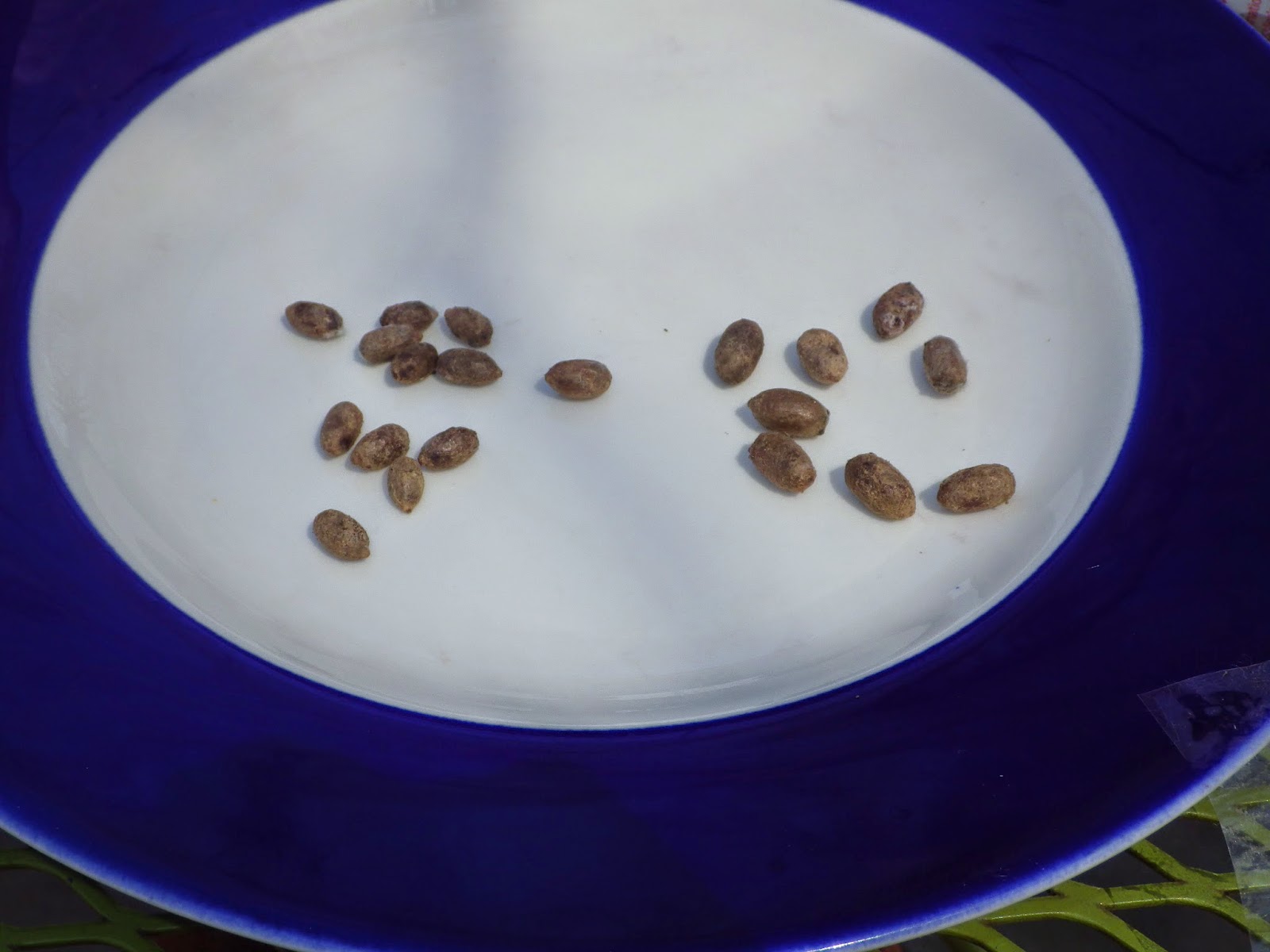 |
| Japanese Knotweed |
 |
| Japanese Knotweed Lime Bars |
 |
| Japanese Knotweed utilized as part of a Mason Bee House |
I just love utilizing invasive non-native plants. I can feel good about harvesting them because I know it helps other plants that are native and/or not invasive by keeping down the growth and spread of the invasive AND I know I won't hurt the plant's ability to survive (try as I might). In some instances, like Garlic Mustard, you just can't eradicate it even if you want to.
 |
| Up Close |
It's that time of year when Japanese Knotweed Polygonum cuspidatum sends up it's new stalks from the Earth. These can be eaten like Asparagus, though they also work well in deserts, and have a lemony type flavor, as we shall see...
The roots are used medicinally and are called Hu Zhang in TCM; they have been used for an assortment of issues such as cancer, cystitis, Lyme, and traumatic injury (see a qualified practitioner for this).
To make this delectable desert:
Harvest the stalks before they have done much leafing out, remove any leaves and the very top where the leaves are forming (these can be added to an omelette or the like); chop the remaining stalks up into small pieces. You want about 4 cups of chopped stalks, a little more or less is fine.
 |
| Leaves and tops to use for another dish. |
 |
| Chopping into small pieces. |
 |
| Splitting the larger ones lengthwise before chopping. |
Preheat oven to 350. For the bottom layer: melt a stick of butter in an 8" x 8" pan, once melted mix directly in the pan with the butter: one cup of whole wheat pastry flour and one cup of raw cane sugar. I like to use all organic ingredients so I'm not ingesting pesticides or contributing to their being sprayed on farms and poisoning the water and land (along with the food). Mash this dough evenly into the bottom of the pan covering the entire bottom. Bake for 15 minutes. Allow to cool so it hardens.
 |
| The top layer mixed and ready to pour onto bottom layer. |
In the meantime, make your top layer: mix 3 eggs, 1 c. raw cane sugar, 1/2 c. whole wheat pastry flour, 1/4 c. lime (or lemon) juice until well blended then stir in the chopped stalks. Pour this over the cooled bottom layer and spread evenly. Bake one hour, turning oven to 400 for last 15 minutes. Make sure the topping is set up; it might need a little longer cook time.
Delish!
 |
| If you build it they will come: the Mason Bee House on the art studio, L'Atelier. Netting is to keep birds out. |
A...n...d.... another use for those stalks after they die back in the fall (they persist through winter so you can harvest them right up into early Spring) is housing for Mason bees. These solitary bees nest in tubes, whether that be hollow plant stalks, holes beetles have drilled in trees, or anything similar such as holes we drill or tubes we put out. They live for 6 weeks in the Springtime right at the moment fruit trees bloom.
***If you have fruit trees, you want these bees on your property.*** They are easy to care for and do a better job with fruit trees than honeybees because of how they gather nectar.
 |
| Drilling the starter holes in 7" pieces of Fir 4" x 4", then on to using a hand-held drill to finish them. |
 |
| Mason bee cocoons gifted from a friend, thanks Laura! Males on left, Females on right. |
 |
| Mason Bee cocoon, they hatch from the nipple end, so this needs to face out if placed in a tube. |
Here is a great book if you want to learn more. Here is one of many houses you can purchase for them.
If you want to make your own, they prefer 5/16th size holes 6" deep (don't use pressure treated wood). And of course, if you have access to a stand of Japanese Knotweed (bamboo also can work well), you can harvest your own as I did (seen collected in the 4 black pots in above picture of large Mason bee house).
 |
| A simple, smaller house can be made too, such as this one upper left. |
~~~

Btw, mason bees, not all native ones, filled the smaller house in the bottom picture almost 100%, while the larger house only had a few holes filled. This small one is facing south on a covered porch, the big one is one the only sunny side available on the art studio, which is west (and not ideal, but the best of options next to the garden). Interested to see what happens next year...
ReplyDelete